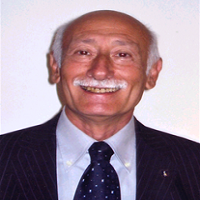Chemical Composition Using FTIR Technique, Antioxidant [Hypochlorous, Hydrogen peroxide and Superoxide Radical Scavenging] and Antimicrobial Activities of Haloxylon salicornicum Methanolic Aerial-Part Extract
Keywords:
FTIR Technique, Hypochlorous, Hydrogen peroxide, Superoxide Antimicrobial, Haloxylon salicornicum.Abstract
The objectives of the present study are identification of chemical groups present in Haloxylon salicornicum using a Fourier transform infrared spectrophotometer method and assessment of antioxidant and antimicrobial potentials. The samples H. salicornicum were washed and thereafter air dried to ensure that they were through washed. The mash was filtered employing Whatman filter sheets (no. 1, 125 mm, Cat No. 1061 135 Germany). Approximately 30 mL of each plant extract was taken for this purpose and the concentrations of the final plant extracts were also determined, and all the samples were stored at 4 degrees Celsius. In this case the sample was scanned at infrared region of 400 nm-4000 nm. The human pathogenic bacteria were isolated from Microbiology department of hilla hospital. E.coli, Salmonella, Pseudomonas, Bacillus and Staphylococcus bacteria in particular are known to be part of the major bacterial pathology. Inhibitory zone diameter (mm) were measured after 18–24 h at 37°C. FT-IR peak values of solid analysis according to Type of Intensity, Bond, Type of Vibration and Functional group assignment [Strong, =C–H, Bending, Alkenes] [Strong, C-F, Stretch, alkyl halides][ Medium, C=C, Stretch, Aromatic][ Bending, N-H, Stretch, Amide][ Strong, C=O, Stretch, Ester][ Strong, C-H, Stretch, Alkane]. Antioxidant [Hypochlorous acid, Hydroxyl and Superoxide radical scavenging] Activities of Three fractions of Haloxylon salicornicum methanolic crude extract, namely ethanol fraction and water fraction Aerial-Part Extract have been assayed. Antibacterial activity of secondary metabolites of Haloxylon salicornicum: The inhibition of five pathogenic bacteria and antibiotics by the secondary metabolites of Haloxylon salicornicum (AM-Amikacin; AP-Ampicillin; CF-Cephalothin). Pseudomonas aeruginosa (11.10 ± 0.21), Salmonella enterica (08.39 ± 0.14), Bacillus subtilis (19.00 ± 0.45), Escherichia coli (14.36 ± 0.30) and Staphylococcus aureus (12.00 ± 0.29). Haloxylon salicornicum metabolites was very highly active against Bacillus subtilis (19.00 ± 0.45).
Downloads
References
Cheng CG, Liu J, Wang H, Xiong W (2010). Infrared spectroscopic studies of Chinese medicines. Appl. Spectros. Rev. 45: 165–178.
Huda J, Ameera OH, Imad HH, Muhanned AK (2015). Characterization of alkaloid constitution and evaluation of antimicrobial activity of Solanum nigrum by using (GC-MS). Journal of Pharmacognosy and Phytotherapy. 7(4): 56-72.
Fernie AR, Trethewey RN, Krotzky AJ, Willmitzer L, 2004. Innovation – Metabolite profiling: from diagnostics to systems biology. Nat Rev Mol Cell Biol.5: 763-769.
Atik BF, Bousmaha L, Taleb BS, Boti JB, Casanova J (2007). Composition chimique de l’huile essentielle de Rosmarinus officinalis L poussant à l’état spontané et cultivé de la région de Tlemcen. Biologie & Santé. 7: 6-11.
Fiehn O (2002). Metabolomics – the link between genotypes and phenotypes. Plant Mol Biol. 48:155-171.
Boutekedjiret C, Bentahar F, Belabbes R, Bessiere J (2003). Extraction of rosemary essential oil by steam distillation and hydrodistillation. Flavour Fragr. J.18: 481–484.
Sergi, M and Leonor A (2002). Subcellular Compartmentation of the Diterpene Carnosic Acid and Its Derivatives in the Leaves of Rosemary. Plant .Physiol. 125: 1094-1102.
Imad HH, Huda J, Muhanned AK, Ameera OH (2015). Alkaloid constitution of Nerium oleander by using gas chromatography- mass specroscopy (GC-MS). Journal of Medicinal Plants Research. 9(9): 326-334.
Al-Sereiti MR, Abu-Amer KM, Sen P (1999). Pharmacology of rosemary (Rosmarinus officinalis) and its therapeutic potentials. Indian .J. Exp. Biol. 37(2): 124-30.
Ameera OH, Imad HH, Huda J, Muhanned AK (2015). Determination of Alkaloid Compounds of Ricinus communis by gas chromatography- mass spectroscopy (GC-MS). Journal of Medicinal Plants Research. 9(10): 349-359.
Jamshidi R, Afzali Z, Afzali D (2009). Chemical Composition of Hydrodistillation Essential Oil of Rosemary in Different Origins in Iran and Comparison with Other Countries. American-Eurasian J. Agric. & Environ. Sci. 5 (1): 78-81.
Mohammed AS A-MA. The effect of extract of the leaves of Adhatodav asicia plant against some types of bacteria contaminating the wounds by using an allergy test. J Umm Salamah of Sci. 2007;4(1):47-54.
Himratul-Aznita WH, Mohd-Al-Faisal N, Fathilah A. Determination of the percentage inhibition of diameter growth (PIDG) of Piper betle crude aqueous extract against oral Candida species. J Med Plant Res. 2011;5(6):878-84.
Korycka-Dahl M, Richardson T: Photogeneration of superoxide anion in serum of bovine milk and in model systems containing riboflavin and amino acids. J Dairy Sci. 1978, 61: 400-407.
Tylor BS, Kion YM, Wang QI, Sharpio RA, Billiar TR, Geller DA: Nitric oxide down regulates hepatocyte-inducible nitric oxide synthase gene expression. Arch Surg. 1997, 132: 1177-1183.
Aruoma OI, Halliwell B, Hoey BM, Butler J: The antioxidant action of N-acetylcysteine: Its reaction with hydrogen peroxide, hydroxyl radical, superoxide, and hypochlorous acid. Free Rad Biol Med. 1989, 6: 593-597.
Long LH, Evans PJ, Halliwell B: Hydrogen peroxide in human urine: implications for antioxidant defense and redox regulation. Biochem Biophys Res Commun. 1999, 262: 605-609.
Pedraza-Chaverrí J, Arriaga-Noblecía G, Medina-Campos ON: Hypochlorous acid scavenging capacity of garlic. Phytother Res. 2007, 21: 884-888.
Kell DB, Brown M, Davey HM, Dunn WB, Spasic I, Oliver SG (2005). Metabolic footprinting and systems biology: The medium is the message. Nat Rev Microbiol. 3:557-565.
Bunaciu AA, Aboul-Enein HY, Fleschin S (2011). Recent applications of Fourier transform infrared spectrophotometry in herbal medicine analysis. Appl. Spectros. Rev. 46(3): 251–260.
Ram SV, Ur Rahman L, Sunita M, Rajesh K V Amit C, Anand S (2011). Changes in essential oil content and composition of leaf and leaf powder of Rosmarinus officinalis. CIM-Hariyali during storage. Maejo International Journal of Science and Technology.5(02): 181-19.
Robertson DG (2005). Metabonomics in toxicology: A review. Toxicol. Sci. 85: 809-822.
Sumner LW, Mendes P. Dixon RA (2003). Plant metabolomics: largescale phytochemistry in the functional genomics era. Phytochem. 62(6): 817-836.
Robertson DG (2005). Metabonomics in toxicology: A review. Toxicol. Sci. 85: 809-822.
Surewicz WK, Mantsch HH, Chapman D (1993). Determination of Protein Secondary Structure by Fourier Transform Infrared Spectroscopy: A Critical Assessment. Biochemistry. 32(2): 389-393.
Troncoso N, Sierra H, Carvajal L, Delpiano P, Gunther G (2005). Fast high performance liqiuid chromatography and ultravioletvisible quantification of principle phenolic antioxidants in fresh rosemary. J. chromat. 1100: 20-50
Samiullah, A.B.A., Asghari Bano, B. (2011) In vitro inhibition potential of four chenopod halophytes Against microbial growth. Article, Quaid-i-Azam. Pak. J. Bot. 43, 123–127.
Alqumiaso, S., Soliman, G., Awaad, A., Donia, A.E.R. (2012) Anti-inflammatory activity, safety and protective effects of Leptadenia pyrotechnica, Haloxylon salicornicum and Ochradenus baccatus in ulcerative colitis. Phytopharmacology. 2(1), 58–7.
Burt, S. (2004) Essential oils: their antibacterial properties and potential applications in foods - a review. International Journal of Food Microbiology. 4, 223–253.
Girard, G. (2010) The Properties of Essential Oils in Oral and Dental Care from Past to Present, Doctoral Thesis in Pharmacy, Henri Poincare University - Nancy. 1, pp. 250. (French)
Tajkarimi, M. M., Ibrahim, S. A., Cliver, D. O. (2010) Antimicrobial herb and spice compounds in food. Food Control. 21, 1199–1218.
Mahmoud, A., Eran, S. (2011) Hepato protective studies on Haloxylon salicornicum: a plant from cholistan desert. Pak. J. Pharm. Sci. 24 (3), 377–382.
Mohammedi, Z. (2013) Phytochemical Study and Biological Activities of Some Medicinal Plants from the Northern and Southwestern Regions of Algeria, Doctoral Thesis in Biology, Abou Bekr Bel-kaid Tlemcen University, Algeria (French).
Mayachiew, P., Devahastin, S. (2008) Antimicrobial and antioxidant activities of Indian gooseberry and galangal extracts. Food Science and Technology. 41, 1153–1159.
Sati, S.C., Joshi, S. (2011) Aspects of antifungal potential of ethnobotanically known medicinal plants. Res. J. Med. Plant. 5, 377–391.
Ferheen, S., Ejaz, A., Nighat, A., Abdul, M., Raza Shah, M., Sarfraz, A. N., Choudhary, M. I. (2005) Haloxylines A and B, Antifungal and Cholinesterase Inhibiting Piperidine Alkaloids from Haloxylon salicornicum. Jour. Chem Pharm. Bull. (Tokyo). 53(5), 570–572.
Viuda-Martos M, Yolanda R, Juana F, José P (2007). Chemical Composition of the Essential Oils Obtained From Some Spices Widely Used in Mediterranean Region. Acta Chim. Slov. 54: 921–926.

Downloads
Published
How to Cite
Issue
Section
License
Copyright (c) 2024 Clinical Images and Case Reports

This work is licensed under a Creative Commons Attribution 4.0 International License.
Clinical Images and Case Reports












